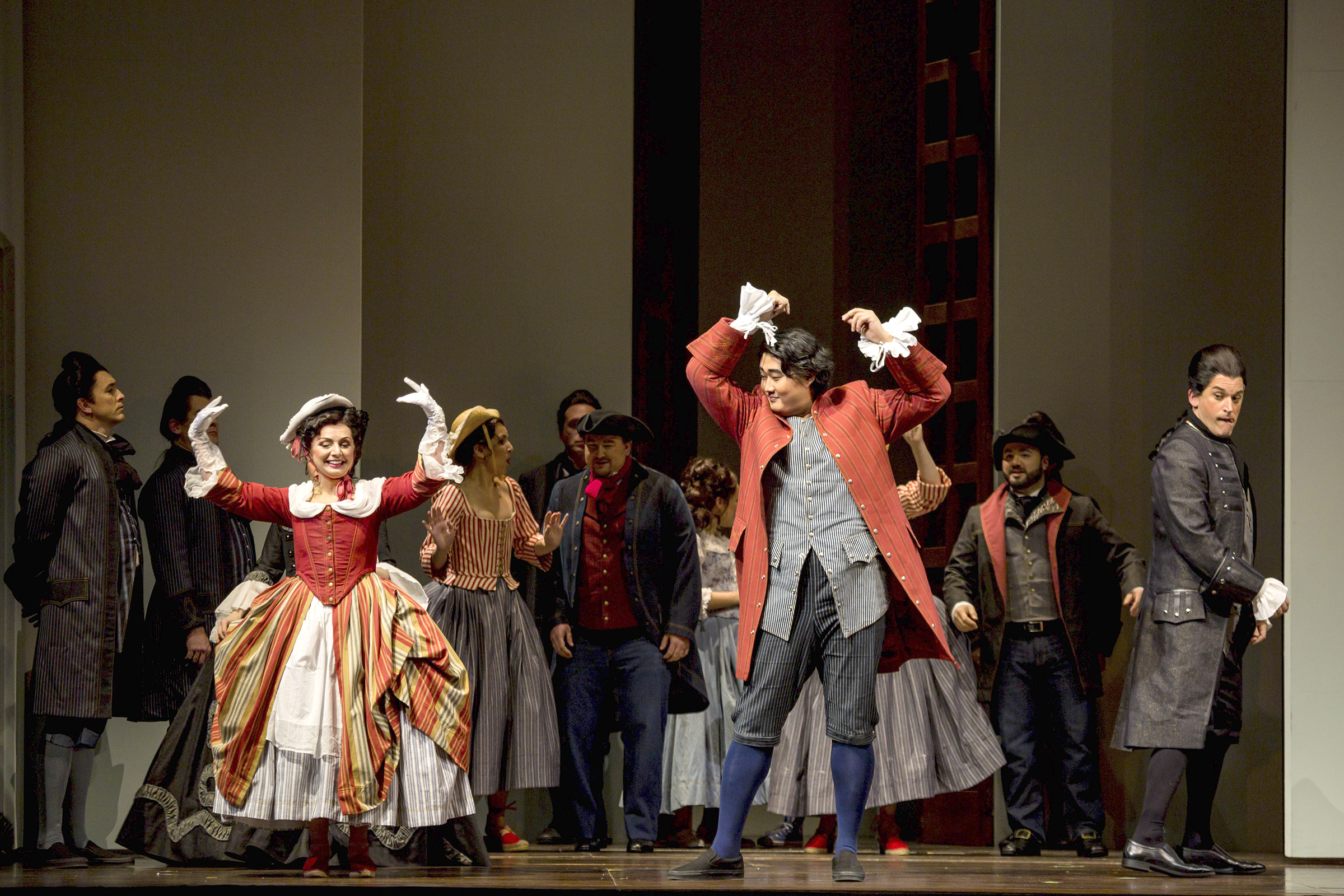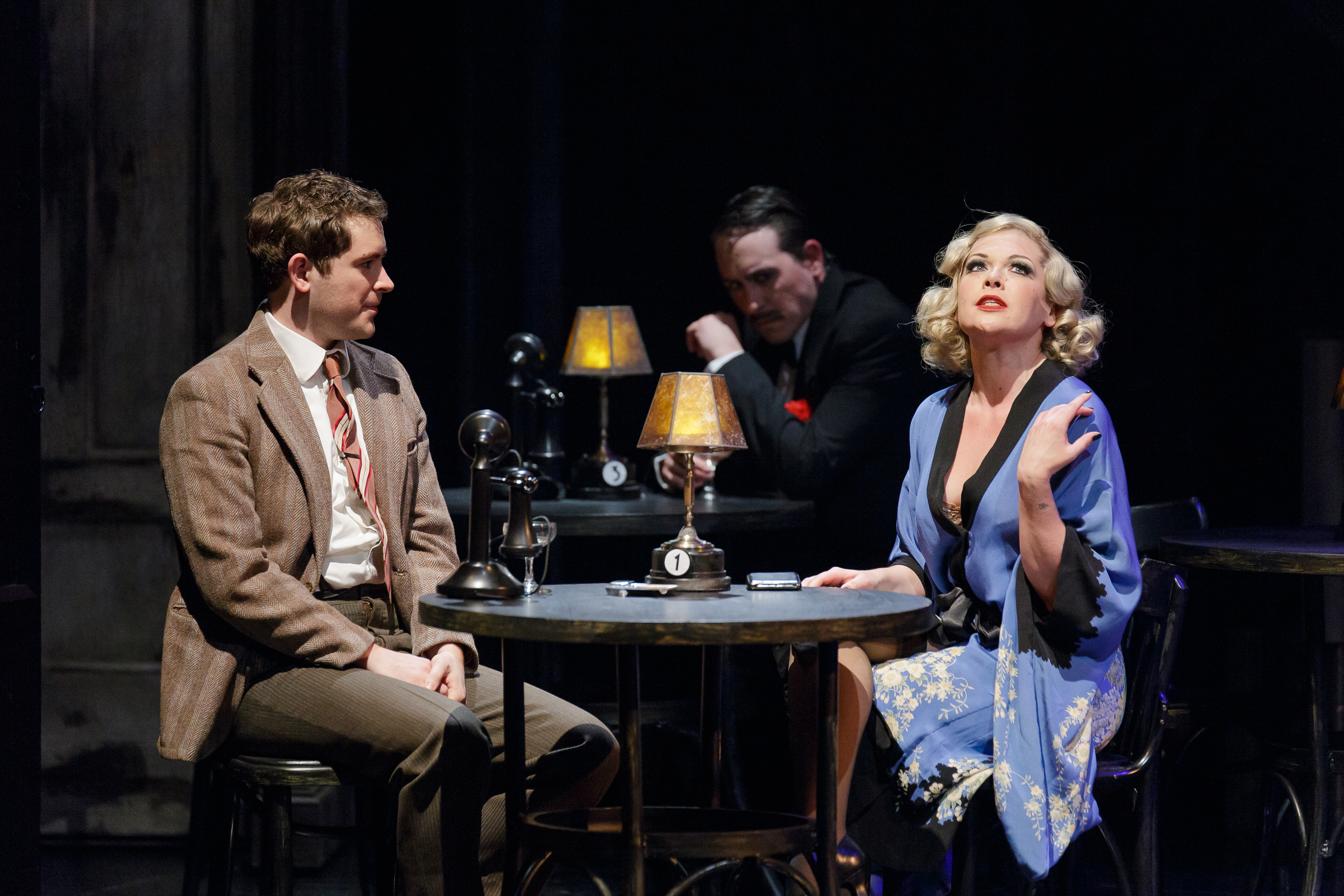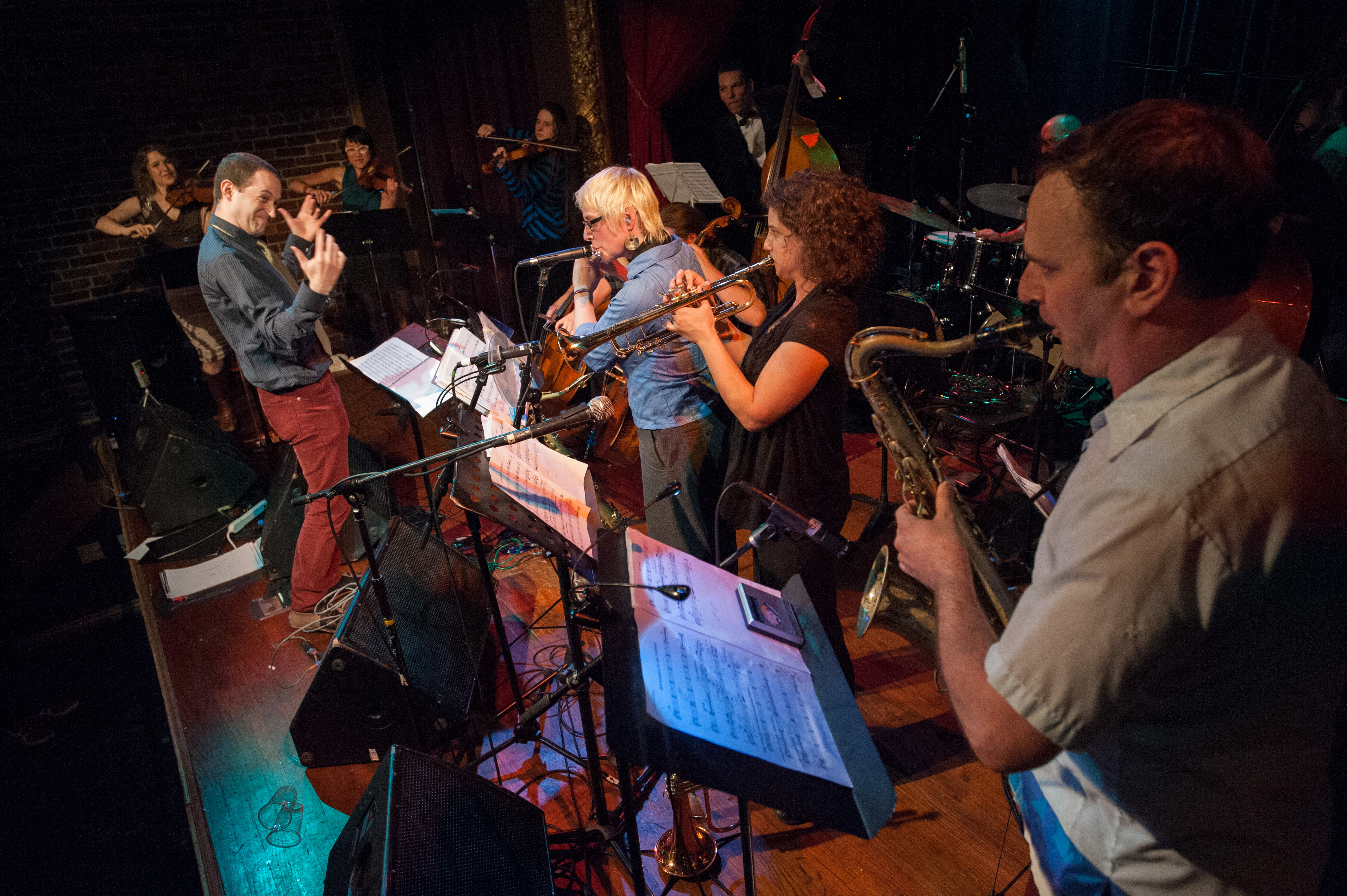All the jokes you’ve heard about ruthlessly competitive sopranos seem to have come true: Maria Mannisto is trying to figure out the best way to shove Becca Friedman.
She wants her hands to land on Friedman’s shoulders on a downbeat. So she and director Jim Horne decide she should draw back her arms first to give the musicians a pickup beat. Friedman, too, times her return blow to land on the downbeat of the next bar.
Mannisto, a versatile Bellevue native chosen as the 2007 Performer of the Year by a Finnish-American cultural foundation, and Friedman, from Whitman College, play love-embittered astronauts in this weekend’s premiere of Bill Smith’s jazz opera Space in the Heart. It’s loosely based on the story of Lisa Nowak, the International Space Station crewmember currently awaiting trial for her attempt last year to kidnap her romantic rival. Even “loosely based” is overstating the case; that tabloid tale is just a premise for Smith to explore the age-old operatic subjects of love and jealousy. His first inspiration, in fact, was one of the oldest surviving operas.
The 82-year-old Smith’s desire to write an opera dated back to his college days, but it wasn’t until February 2007 that the Early Music Guild’s staging of Monteverdi’s 1642 The Coronation of Poppea revived the idea, showing Smith the emotional gravitas that could be produced with just a handful of musicians. “It’s the opposite of 19th-century grand opera,” Smith says. Heart‘s connection to the past goes beyond scale: Baroque players accompanying vocal music were given only a bass line and chord changes and improvised the rest, just as jazzers do. Smith notated his voice parts completely; he had no interest in scat-singing.
Over his long career, Smith’s embraced both jazz and experimental music, collaborating with musicians from Dave Brubeck and Red Norvo to Pauline Oliveros and John Cage, pioneering new sounds and new techniques for his instrument, the clarinet, and as a University of Washington faculty member (1966–96), posting a dual biography on their Web site—he’s “Bill” for jazz, “William O.” to the avant-garde. Seeking a librettist, Smith turned to Peter Monaghan, a local expert in creative music, who for years hosted the “Outside Jazz” show on KBCS and has been a regular contributor to Earshot, but who had never written a libretto before.
“Writing contemporary operas for the crooning technique: how has everybody been so dumb as to miss it?” Virgil Thomson wrote in 1939. He argued that works written especially for microphone singing, rather than hall-filling operatic vocal projection, were music theater’s next frontier. It took only 70 years for a composer to realize the idea. Heart‘s three vocalists wear cordless mikes to balance their singing—at roughly the same volume as natural speech—with the three-member “orchestra.” (Plus, the belt-clipped mikes look completely plausible with the khaki jumpsuits and combat boots the astronauts wear.)
Smith set the hour-long opera’s seven scenes in swing style—”simple Count Basie stuff,” he says—alternated with gnarlier free-jazz instrumental interludes. Smith plays clarinet and a bit of piano; his drummer, Greg Campbell, doubles on French horn (sometimes playing both at once; his horn’s slung over his shoulder on a strap for quick access) while Brian Cobb plays bass. For color, Campbell is armed with percussion beyond a standard trap set—chimes, a metal bowl, and a bow for his cymbals—and Smith uses electronic delay effects for his finale’s dream sequence.
It’s in this scene that the Nowak character, here named Simone (Mannisto), finally detaches from reality, and the burbling, echoing processed clarinet sound signals this. Her music throughout has been wistful and intimate; her alluring aria at the end of Scene 5 falls precisely between a Baroque lament (over a traditional descending bass line) and a Michel Legrand ballad. The solos for cowboy-astronaut Hollis (Jordan Petersen), by contrast, have a Bobby Darin swagger and lyrics full of double entendres, while Mae’s music (sung by Friedman) is torchier and more seductive.
For his text, Monaghan drew inspiration not only from the Monteverdi libretto, but from ancient Greek plays, the lyrics of “Great American Songbook” standards, even the heightened melodrama of mariachi songs. He came up with a terrific libretto—astonishingly so, considering it’s his first—that wittily and surefootedly combines slangy passages for Mae and Hollis—
Mister, saddle up. We’d be doin’ no harm.
But for now, keep your hottest gun holstered.
—with Elizabethan-flavored poetry for Simone:
Love makes gods as weak as men;
Night is happiness, misfortunes, both:
Lust and deceit, sadness, silence.
So many opera libretti of the past half-century read like play scripts; their language may be more superficially naturalistic than operas of old, but they lack the pulse that aurally organizes and propels the music. Monaghan’s lines, however, are clearly rhythmed, subtly and flowingly. Horne came up with a minimal set and blocking, using NASA space photographs as projected backdrops during the interludes. With its small cast, simple staging, and novel style and story (on timeless themes), Space in the Heart should travel well. Smith calls it a “living-room opera” that can work anywhere six performers can fit, and had Cornish College and Earshot not signed up to co-sponsor this production, he would have happily premiered the piece in his own home: “I thought, ‘If we don’t get a stage, to hell with it!'”






